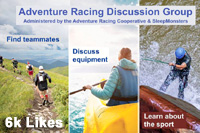Eco Motion Brazil 2005
Course Revealed, Maps Handed Out
Susan McKenzie / 01.10.2005


Shortly after eight o’clock the event began, though it would take another ninety minutes for the 440-kilometre course to be revealed. There were speeches, a sword fight (with live accordion accompaniment), more speeches, several spectacular videos of past Eco-Motions and even a brief history lesson on Rio Grande do Sul, a history rich in civil war and bloody battles.
“As many people already know, the race will begin in Torres on the coast,� race organizer Said Aiach Neto told the teams in Portuguese, which was immediately translated into English courtesy of United Nations-like headsets that were available for everyone. “We tried to keep it quiet but there were some leaks,� he added. (Like any race, locals know the whole course months before the racers learn.)
The race will begin Sunday at four pm local time, and the start promises to be one of the most spectacular, with one member of each team (52 racers in total) simultaneously rappelling down a 30-metre rocky cliff to the beach below.
Teams will then trek three kilometres to the start of the first kayaking section. They’ll still be in the double-seaters when the sun sets and will spend the rest of the night trekking, mountain biking and paddling.
“There are some really good scrambles� Neto added. “You need to be really agile in some sections, so to be safe we have put up ropes for you to use.�
If the race could be characterized in a few words, it would be best to use the words of the staffer who walked me through the course: “trekking, trekking, trekking, up, up then mountain bike down, down, down.�
“There is some crazy downhill biking on this course,� says Neto. And the trekking will take the teams down some deep canyons and into the heart of puma territory.
Aside from the traditional paddle, bike, hike, paddle, bike, hike, the organizers of EcoMotion have added a new “social� event to the race. At checkpoint 14, teams will pick up a horse – but not to ride it. Instead, they will load bags of food and trek the horse 19 kilometres down to a drop off point where the food will be distributed to some of the poorest people in this region of Brazil.
“This is a very traditional route you will use. We want you to experience how food was delivered in past times here,� said Neto. “This is an historic trek you will take.�







 SleepMonsters
SleepMonsters



